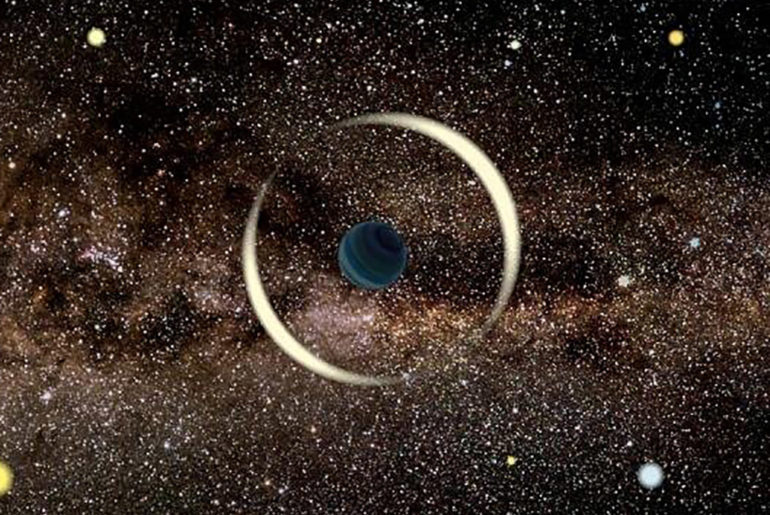
Photo credit: Jan Skowron/Astronomical Observatory, University of Warsaw
A team of scientists, led by Polish astronomers, have discovered the smallest “rogue planet” (OGLE-2016-BLG-1928) yet, traveling through the Milky Way galaxy unattached to a star. This exoplanet is speculated to have a mass between that of the Earth and Mars. Free-floating planets emit almost no radiation and cannot be discovered using traditional methods of astrophysical detection, but rather gravitational microlensing, which is based on Einstein’s theory of general relativity, where a massive object (lens) may bend the light of a bright background object (source).
The lens’ gravity serves as a large magnifying glass that bends and magnifies the light of distant stars. Modern surveys looking for gravitational microlensing events are monitoring hundreds of millions of stars in the Milky Way center, where the chances of microlensing are at their highest. Warsaw University astronomers lead the OGLE survey, which carries out one of such experiments. OGLE is one of the largest and longest sky surveys with operations running for over 28 years. The team is currently using a 1.3-meter Warsaw Telescope located at Las Campanas Observatory, Chile.
- POWERFUL 15X MAGNIFICATION: Giant astronomy binoculars with massive 70mm objective lenses and 20x power. Pair them with any tripod for long-distance...
- WORKS WITH YOUR TRIPOD: Due to their size & weight, most users mount SkyMaster binoculars on a traditional photo tripod (not included). The built-in...
- BRIGHT, SHARP VIEWS WITH BaK-4 PRISMS: The SkyMaster is a favorite among those who view in dim conditions near dawn and dusk or at night for...
If a massive object [a star or a planet] passes between an Earth-based observer and a distant source star, its gravity may deflect and focus light from the source. The observer will measure a short brightening of the source star. Chances of observing microlensing are extremely slim because three objects—source, lens, and observer—must be nearly perfectly aligned. If we observed only one source star, we would have to wait almost a million year to see the source being microlensed,” said Dr. Przemek Mroz, a postdoctoral scholar at the California Institute of Technology and a lead author of the study.


